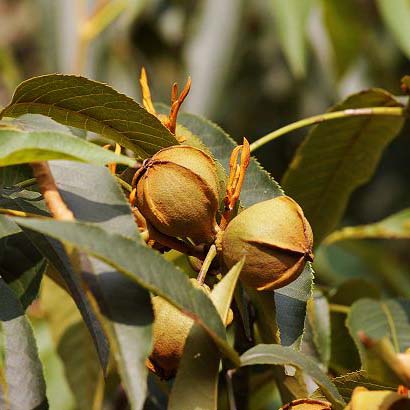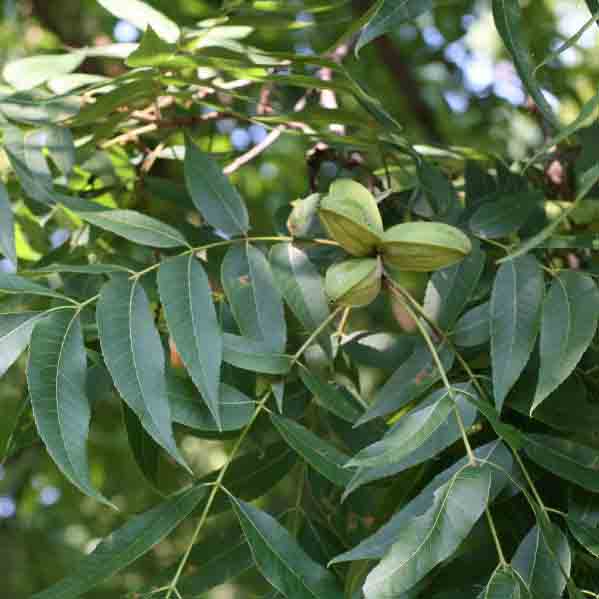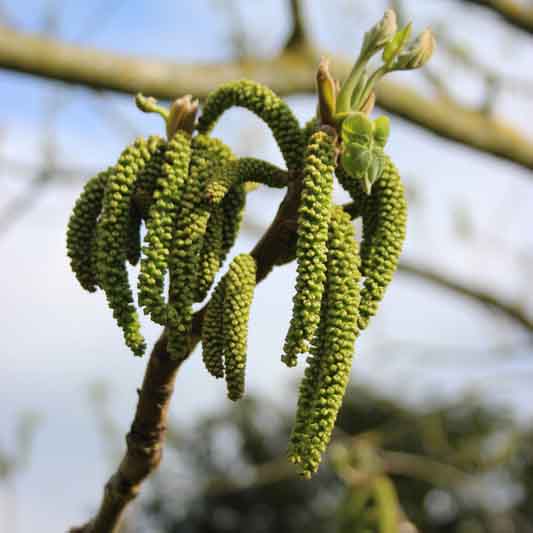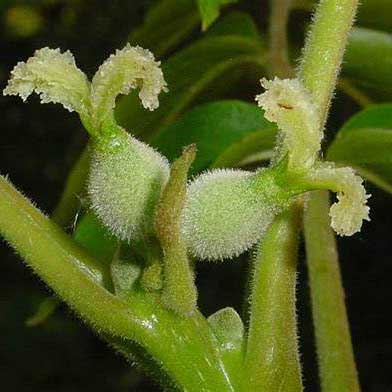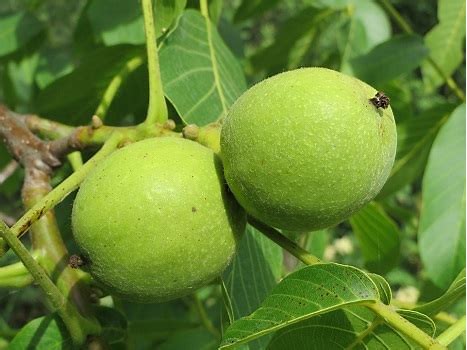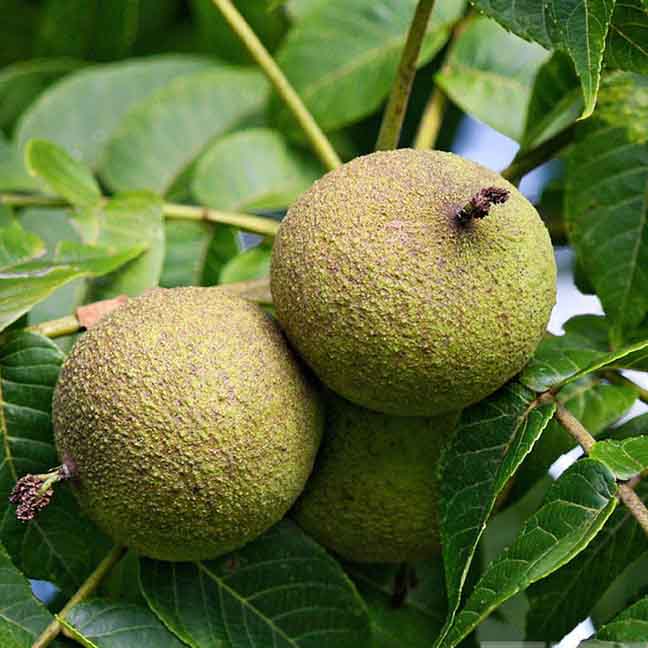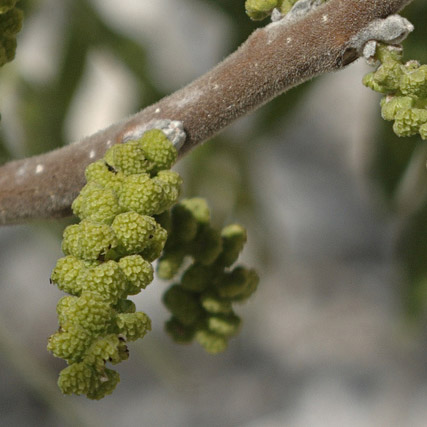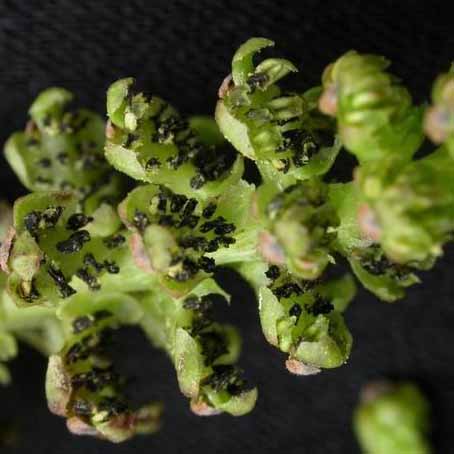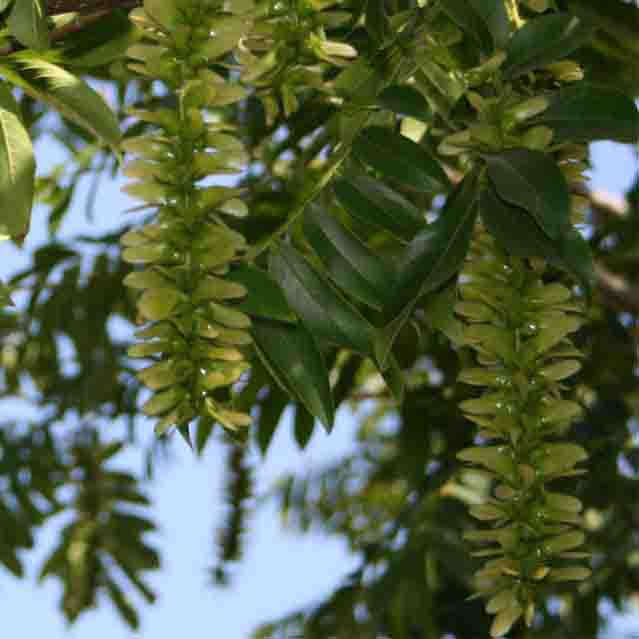Portal of Juglandaceae now is available ! Please read our document first.
- Phylogenetic
- Taxonmy
- Usages
- Genomic Study
The Phylogenetic study of the Juglandaceae Family
Today, the Juglandaceae family contains eight genera and about 60 species spread all over the world.
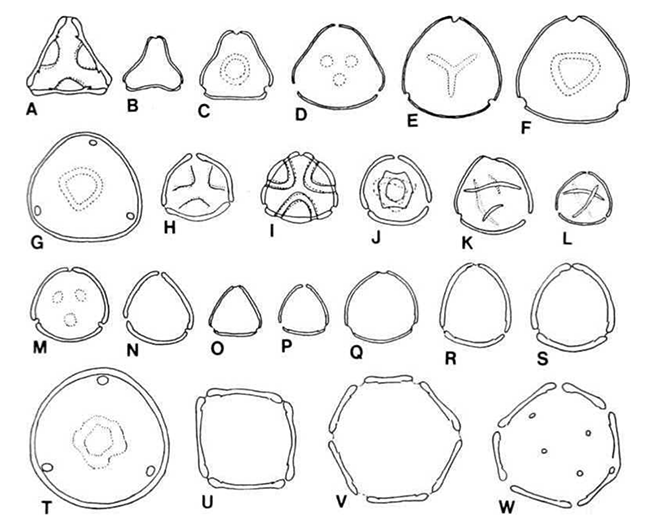
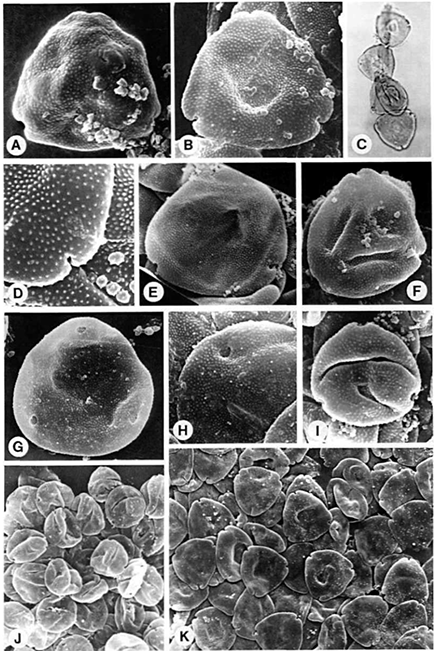
Figure. Pollen grain digrams of fossil and extant Juglandaceae. (obtained from Manchester, S. R. Early history of theJuglandaceae. Plant Syst. Evol. 162, 231–250 (1989).)

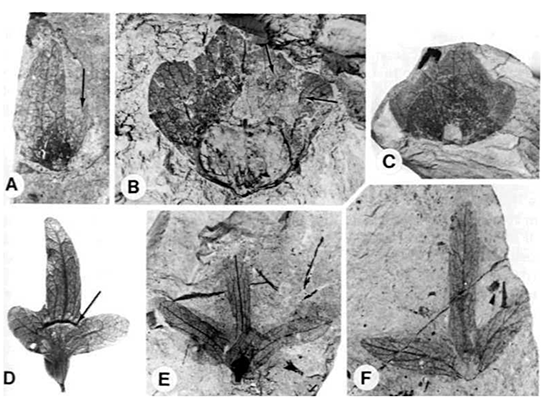
Figure. Fossil and extant fruits of Juglandaceae. (obtained from Manchester, S. R. Early history of theJuglandaceae. Plant Syst. Evol. 162, 231–250 (1989).)
Fossil studies of the Juglandaceae family may provide insights into the phylogenetic history of the family and give a more unobstructed view of the walnut family. Evidence from the pollen and fruit fossils of the Juglandaceae suggested that the species were rapidly differentiated in the Paleocene. However, the question of when the ancestral species of the Juglandaceae family began to radiate remains.
The fossil fruit record showed that most of the existing genera and some other extinct genera evolved between the middle Miocene and the late Eocene. The diversification of the fruit morphology during the Paleocene led to a large number of wingless nuts (such as Juglandicarya simplicarpa) suitable for animal dispersion and a variety of winged nuts (such as Cyclocarya, Polyptera, Casholdia) appropriate for wind dispersion. Although both animal and wind spread strategies have been developed very early, the most diffuse approach of the Juglandaceae family today seems to be wind spread.
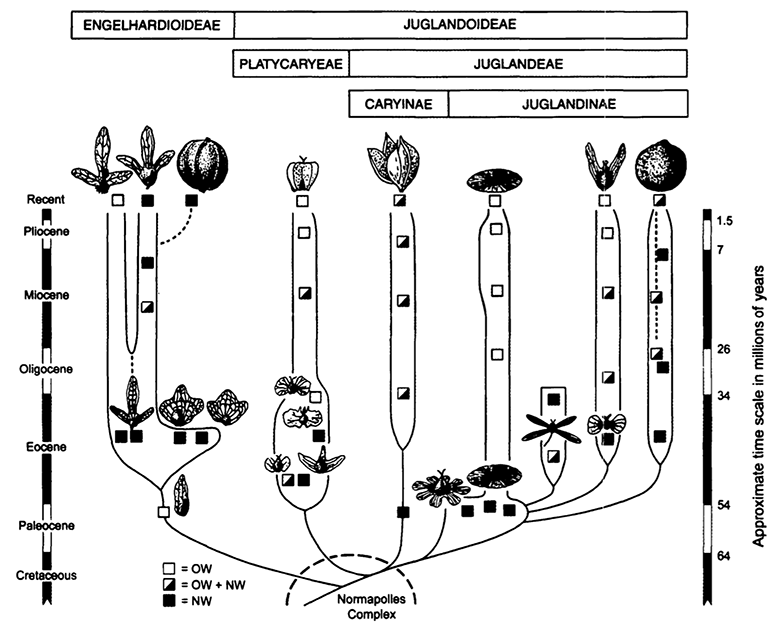
Figure. Hypothesized phylogeny of extant and fossil Juglandaceae. (obtained from Manos, P. S. et al. Phylogeny of extant and fossil juglandaceae inferred from the integration of molecular and morphological data sets. Syst. Biol. 56, 412–430 (2007).)
Reference:
1. Manchester, S. R. Early history of theJuglandaceae. Plant Syst. Evol. 162, 231–250 (1989).
2. Manos, P. S. et al. Phylogeny of extant and fossil juglandaceae inferred from the integration of molecular and morphological data sets. Syst. Biol. 56, 412–430 (2007).
-
Angiospermae
-
Dicotyledoneae
- Rosidae
-
Fagales
-
Juglandaceae
-
Carya
- Carya cathayensis
- Carya illinoensis
- Carya hunanensis
- Carya kweichowensis
- Carya tonkinensis
-
Juglans
- Juglans cathayensis
- Juglans regia
- Juglans hindsii
- Juglans nigra
- Juglans microcarpa
- Juglans sigillata
- Juglans draconia
- Juglans hopeiensis
- Juglans mandshurica
-
Pterocarya
- Pterocarya stenoptera
- Pterocarya delavayi
- Pterocarya hupehensis
- Pterocarya insignis
- Pterocarya macroptera
- Pterocarya rhoifolia
- Pterocarya tonkinensis
-
Cyclocarya
-
Annamocarya
-
Engelhardtia
-
Platycarya
-
Carya
-
Juglandaceae
-
Fagales
- Rosidae
-
Dicotyledoneae
Carya cathayensis
The nuts are delicious and edible. They are also used for oil extraction. The shell can be made of activated carbon. The wood is tough and is made of high quality materials.
Juglans cathayensis
The seed oil is edible and can be made into soap as a lubricating oil; the wood is solid and can be used for various furniture. The bark and exocarp contain tannins, which can be used as raw materials for tannins; the inner peel is thick and can be made into activated carbon; the bast fiber of bark can be used as raw material for fiber industry.
Juglans regia
The seed kernel has high oil content, can be eaten raw, and can be used for oil extraction; the wood is solid and is a good hardwood material.
Juglans hindsii
the nut has a smooth, brown, thick shell containing a small edible nutmeat. It is commercially important as a rootstock for English walnut orchards all over the world, both on its own and as a parent to the J. hindsii x J. regia hybrid, commonly called "Paradox." The wood of Juglans hindsii, sometimes called Claro walnut is used for furniture making and gunstocks because of its good working properties and beautiful grain patterns.
Juglans nigra
kernels are edible but hard to extract. Black walnuts are harvested for commercial sale. The wood from this tree is highly valued for a number of commercial uses including cabinets, furniture, gunstocks and fine veneers. It is perhaps the best furniture wood available from any native American tree.
Juglans microcarpa
Little walnut provides some deer browse in parts of New Mexico. The nuts are a valuable food source for many wildlife species including squirrels and other rodents.
The present genomic study of Juglandaceae family
With the rapid development of NGS (Next Generation Sequencing) technology, the cost of genome sequencing has been greatly reduced, which has caused the genome-wide sequence of more and more species to be deciphered. By 2018, there have been 236 species of angiosperms that have been genome-wide sequenced, and 9 sequenced species in the Juglandaceae in recent years. Then how to dig information efficiently of these huge and valuable data will be the key to answering many biological problems.
Here, we collected 7 previous genome studies in Juglandaceae family for you.
species:Juglans regia
July 18, 2016
species:Juglans regia, Juglans sigillata, Juglans nigra, Juglans microcarpa, Juglans hindsii, Juglans cathayensis, Pterocarya stenoptera
May 23, 2018
species:Carya cathayensis, Carya illinoensis
March 19, 2019
species:Juglans regia, Juglans microcarpa
March 25, 2019
species:Juglans
June 04, 2019
species:Juglans regia
January 31, 2020
species:Juglans sigillata
February 26, 2020
